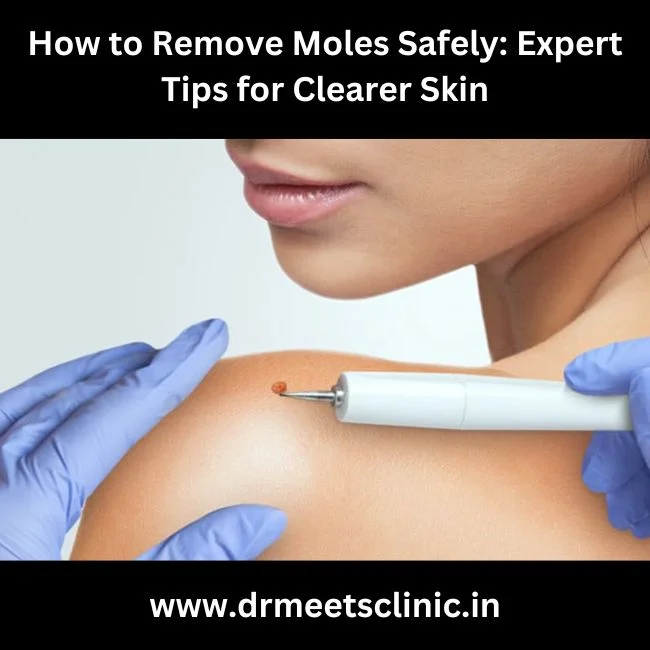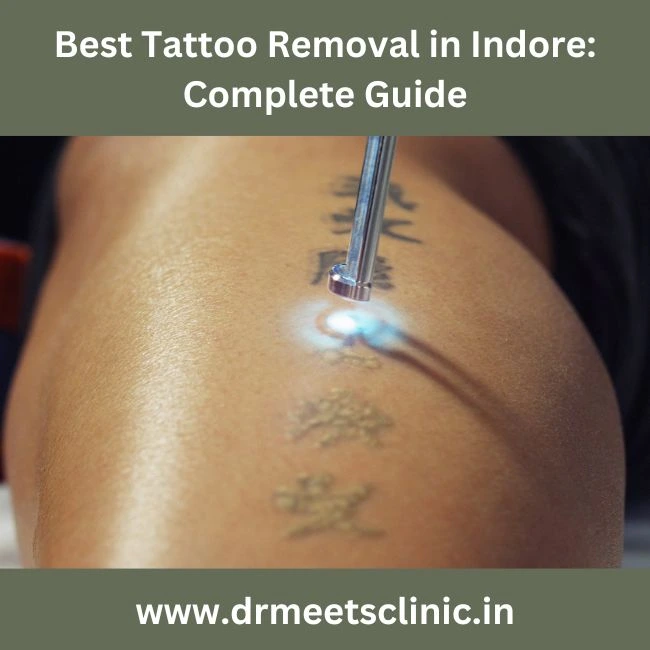Moles are common skin growths that occur when pigment cells, called melanocytes, cluster together. While many moles are benign and harmless, some individuals seek to remove them for cosmetic reasons or due to medical concerns. Whether your mole is a small mark or a noticeable blemish, removing it requires care to avoid complications. This blog will explore safe mole removal options, expert advice on how to maintain healthy skin, and essential tips for post-removal care.
Understanding Moles: What Are They?
Moles, also known as nevi, are small growths on the skin that can appear anywhere on the body. They vary in color from flesh-toned to dark brown or black and can be flat or raised. Moles can develop naturally during childhood and adolescence, and new ones may appear as we age.
Most moles are benign, but it’s important to monitor any changes in shape, size, or color. An unusual mole could be an early sign of skin cancer, especially melanoma. Before considering mole removal, it’s always advisable to consult with a dermatologist to determine if your mole is safe to remove.
Reasons for Mole Removal
There are a few reasons why someone would choose to have a mole removed:
Cosmetic Concerns: Many people feel self-conscious about the appearance of a mole, especially if it’s in a prominent location like the face, neck, or hands.
Irritation: Moles can sometimes become irritated by clothing, jewelry, or shaving, causing discomfort or inflammation.
Medical Concerns: If a mole changes in appearance or becomes symptomatic (itching, bleeding, etc.), a dermatologist may recommend removing it to check for any underlying issues like skin cancer.
Prevention: In some cases, moles that are at risk of turning cancerous may be removed as a precautionary measure.
Safe Mole Removal Methods
Safety should always come first when it comes to mole removal. Here are some of the most effective and safe methods for removing moles:
Excision (Surgical Removal)
Excision is the most common medical procedure for mole removal, especially if there’s any concern about the mole being cancerous. During this procedure, a doctor numbs the area with a local anesthetic and then removes the mole using a scalpel. The mole and some surrounding tissue are cut out, and stitches may be required to close the wound.
Pros:
- Ensures complete mole removal
- Suitable for larger moles or those with a potential cancer risk
- Minimal scarring with proper care
Cons:
- Requires stitches and may leave a scar
- Involves a short recovery period
Shave Excision
Compared to surgical excision, shave excision is less intrusive. In this method, a doctor uses a sharp blade to shave off the mole at the skin’s surface. It’s typically used for raised moles that are non-cancerous.
Pros:
- No stitches required
- Quick procedure with minimal discomfort
Cons:
- May not remove the entire mole root, leading to possible regrowth
- Slight risk of scarring or skin discoloration
Laser Mole Removal
Laser mole removal is a popular option for smaller, non-cancerous moles. The procedure involves using a laser to break down the mole’s pigment cells, which are then absorbed by the skin over time. It’s non-invasive and doesn’t require any cutting or stitching.
Pros:
- No scarring
- Minimal recovery time
- Best for small moles in sensitive areas like the face
Cons:
- Not suitable for deep moles
- May require multiple sessions for complete removal
Cryotherapy (Freezing)
Cryotherapy is a method where liquid nitrogen is applied to the mole, freezing the tissue. The frozen mole eventually falls off, and new skin grows in its place. For superficial moles, this therapy works best.
Pros:
- Quick and painless procedure
- Minimal scarring
- Low risk of infection
Cons:
- Perhaps ineffective on deeper or bigger moles
- Potential risk of blistering or skin discoloration
Electrocautery (Burning)
Electrocautery uses an electric current to burn away the mole tissue. It’s often used for smaller moles and can be performed in a dermatologist’s office.
Pros:
- Fast procedure with minimal downtime
- Less invasive than surgical excision
Cons:
- Not suitable for large or suspicious moles
- May leave a small scar
Should You Consider At-Home Mole Removal?
While there are numerous over-the-counter mole removal products, such as creams or kits, dermatologists generally advise against using these for several reasons:
- Risk of Infection: Without proper sterilization, removing a mole at home can lead to bacterial infections.
- Inaccurate Diagnosis: It’s crucial to have a dermatologist examine the mole before removal to ensure it’s not cancerous.
- Ineffective Results: At-home products may not completely remove the mole, leading to regrowth or scarring.
- Potential for Damage: Incorrect application of at-home treatments can cause skin damage, discoloration, or permanent scarring.
For safe and effective mole removal, always seek professional advice.
Expert Tips for Post-Mole Removal Care
Taking care of your skin after mole removal is essential for promoting healing and preventing infection or scarring. Here are some expert tips for post-procedure care:
Keep the Area Clean
After mole removal, gently cleanse the area with mild soap and water. Wipe dry with a fresh towel, being careful not to wipe too hard as this could cause skin irritation.
Use Antibiotic Ointment
To stop infection and encourage healing, use a thin layer of antibiotic ointment (as directed by your physician). This also helps reduce scarring.
Avoid Sun Exposure
Exposing the treated area to the sun can cause hyperpigmentation or scarring. Use a broad-spectrum sunscreen with at least SPF 30 when going outside, or cover the area with clothing.
Follow Doctor’s Instructions
Every mole removal method has its unique aftercare requirements. Be sure to follow your doctor’s advice, whether it involves changing bandages, applying specific ointments, or avoiding certain activities.
Don’t Pick at the Scab
As the skin heals after mole excision, a scab will develop. Avoid picking or scratching it to prevent scarring and infection.
Monitor for Complications
Get in touch with your doctor right away if the region isn’t healing properly or if you see any infection-related symptoms (redness, swelling, pus).
When to See a Doctor
You must consult a dermatologist right once if you observe any of the following changes in your moles:
- Rapid changes in size, shape, or color
- Irregular or jagged edges
- Multiple colors within the mole
- Itching, bleeding, or crusting
These could be signs of melanoma, a potentially dangerous form of skin cancer, and early detection is key to successful treatment.
Conclusion
Mole removal can enhance both your appearance and peace of mind. However, ensuring the safety and health of your skin should always be a priority. By choosing professional mole removal methods and following expert aftercare advice, you can achieve clearer skin while minimizing the risk of complications. To ensure a successful and safe outcome, always see a dermatologist to identify the best course of action for your unique needs.

















